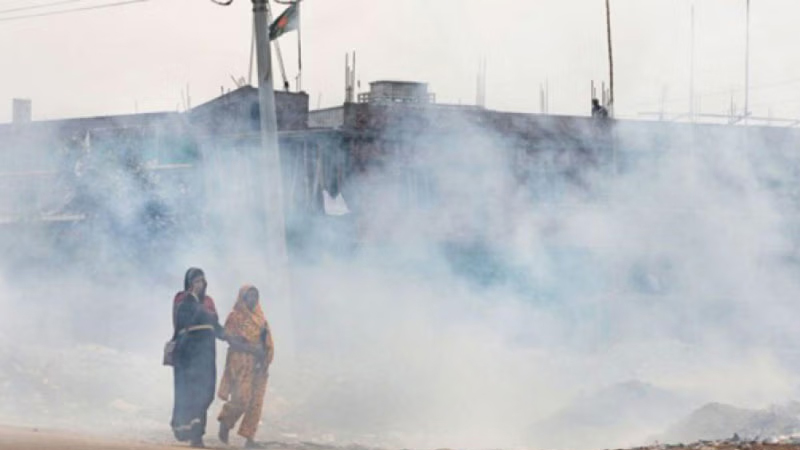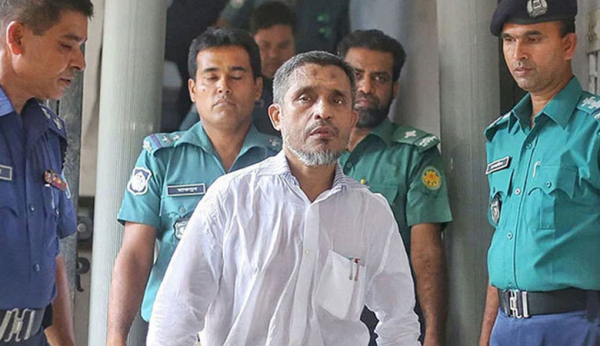IT HAS been four years since Bangladesh faced the deadliest terrorist attack at Holey Artisan Bakery. People still have goosebumps when they recall the memory of that horrific terrorist attack. Since independence, Bangladesh has been practising secularism; and harmonisation among different cultures of people is a familiar picture. We celebrate every single religious and cultural occasions with full of heart and love. Foreigners are always welcomed with gratitude, and the country was undoubtedly secure for foreigners. One dreadful terrorist attack and the whole country was wholly shaken. A group of five men killed twenty-two people, and most of them were foreigners.
Thankfully, in 2019 the anti-terrorism tribunal delivered a judgement against seven members of the new extremist outfit Jamaat-ul-Mujahideen Bangladesh for killing twenty-two innocent victims. The tribunal sentenced seven terrorists to death based on their different degrees of involvement in the attack.
The Islamic extremists want to attract the ISIS to be an affiliate member of it and to create an Islamic rule throughout the country. Even after hearing the death sentence, they were not repentant.
After the incident, several questions popped up. The first one is why these young bunch of people are becoming terrorists. Then, what factors motivate them to kill their innocent fellow human beings. Before this incident, a popular perception captivated people’s minds that only madrassah students and poor people are quickly radicalised. However, the illusion was busted when people realised that any educated youth, even from an affluent family, could also be radicalised. In reality, a terrorist may come from any sphere of life, for example, from a low-income person like Abu Musab al-Zarqawi to a wealthy one like Osama Bin Laden.
On the one hand, there is a high school dropout with a criminal record like Richard Reid, popularly known as ‘shoe bomber’, who tried to blow up the American Airlines Flight in December 2001. On the other hand, there is Ahmed Saeed Sheikh, a brilliant person who left the London School of Economics and joined al-Qaeda. It was Ahmed who kidnapped the Wall Street Journal reporter Daniel Pearl and then brutally beheaded him. Similarly, Nidal Malik Hassan, a US army psychiatrist stationed at Fort Hood, Texas, was influenced by jihadist beliefs. After that, he conducted a mass shooting in 2009, and killed 13 individuals and wounded thirty people. Hence, irrespective of the level of education, economic condition, and social structure, terrorist organisations like al-Qaeda and ISIS recruit people.
Well, honestly speaking, there is no single recipe or method that can describe how and why people are becoming terrorists. It is absolutely a personal decision to join a terrorist organisation and to conduct terrorist activities. However, frustration, grievance, sense of dishonour, religious obligation, and desire to change the socio-economic and political conditions of society can motivate people to adopt the path of terrorism. People get influenced by observing what their friends, peer groups, and social groups do. Therefore, people can be recruited from educational institutions, from recreational and religious places, from sports activities and, of course, from the internet. Yes, it is easy to radicalise a person who shares the same anger and frustration similar to the terrorists to change whatever wrong they are facing in their societal system. Edwin Hardin Sutherland, an American sociologist, rightfully stated in his ‘differential association theory’ that criminal behaviour is learnt.
Moreover, this behaviour is learned through communication, and it is easy to learn from intimate personal groups like friends, family and peers. Suitable examples are the five men who conducted the terrifying attack at Holey Artisan Bakery. Most of them were radicalised by their friends and peer groups.
Furthermore, according to sociologist Robert Agnew’s ‘general strain theory’, criminal behaviour is related to anger and frustration. Those components influence a person to commit a crime when an individual is treated in a way he or she does not want to be treated in a social relationship. ‘social learning theory’ also plays a vital role in explaining extremist radicalisation. Observing people and considering someone as a role model can also inspire a person to join a terrorist group. Interestingly, terrorists commit violence to grab the mass people’s attention and send their message to the broader audience of how powerful they are. That is why they are always up to doing something which can give them massive media attention. In the case of lone wolves, they observe and follow the terrorists via the inter















